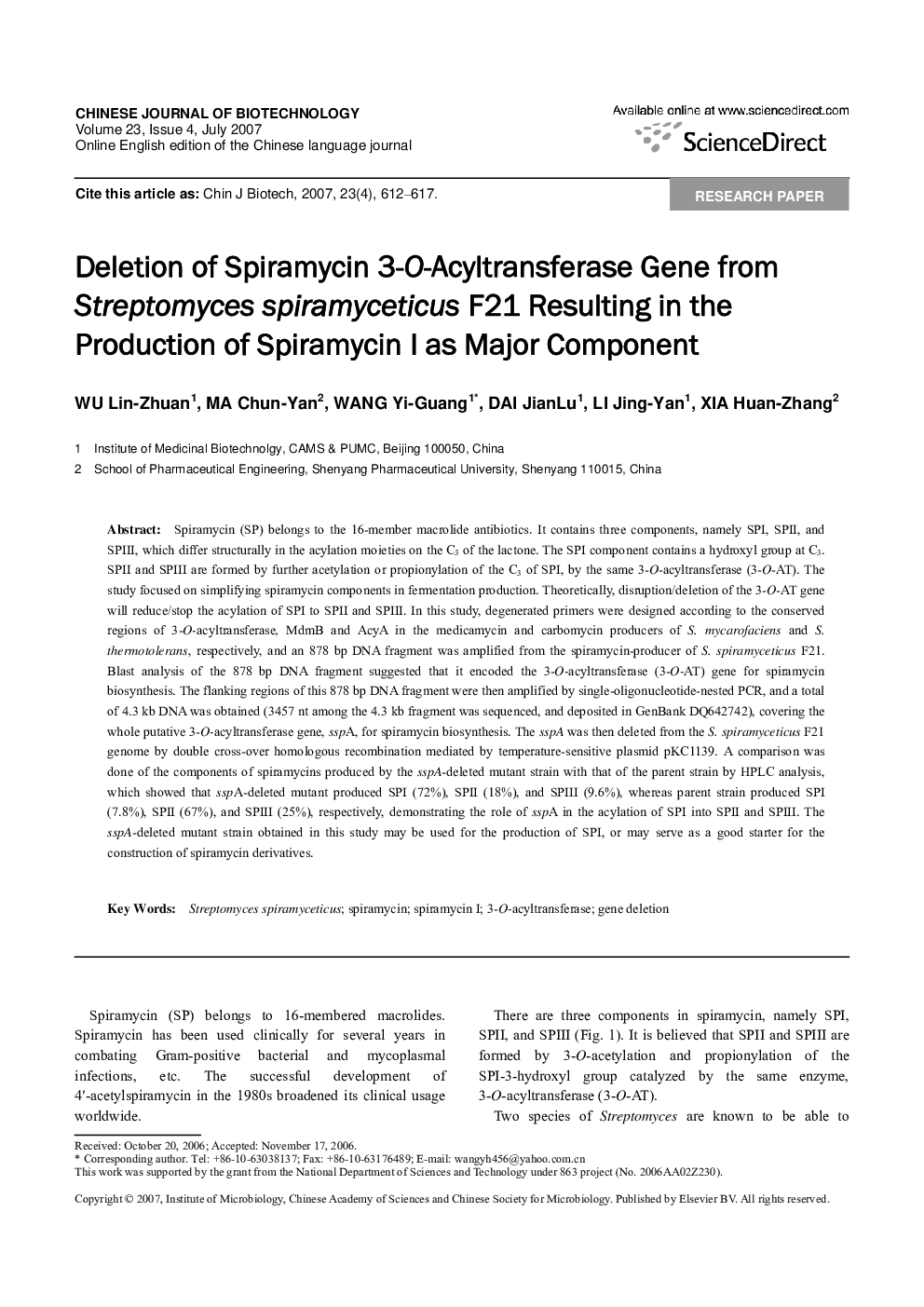| Article ID | Journal | Published Year | Pages | File Type |
|---|---|---|---|---|
| 2078954 | Chinese Journal of Biotechnology | 2007 | 6 Pages |
Abstract
Spiramycin (SP) belongs to the 16-member macrolide antibiotics. It contains three components, namely SPI, SPII, and SPIII, which differ structurally in the acylation moieties on the C3 of the lactone. The SPI component contains a hydroxyl group at C3. SPII and SPIII are formed by further acetylation or propionylation of the C3 of SPI, by the same 3-O-acyltransferase (3-O-AT). The study focused on simplifying spiramycin components in fermentation production. Theoretically, disruption/deletion of the 3-O-AT gene will reduce/stop the acylation of SPI to SPII and SPIII. In this study, degenerated primers were designed according to the conserved regions of 3-O-acyltransferase, MdmB and AcyA in the medicamycin and carbomycin producers of S. mycarofaciens and S. thermotolerans, respectively, and an 878 bp DNA fragment was amplified from the spiramycin-producer of S. spiramyceticus F21. Blast analysis of the 878 bp DNA fragment suggested that it encoded the 3-O-acyltransferase (3-O-AT) gene for spiramycin biosynthesis. The flanking regions of this 878 bp DNA fragment were then amplified by single-oligonucleotide-nested PCR, and a total of 4.3 kb DNA was obtained (3457 nt among the 4.3 kb fragment was sequenced, and deposited in GenBank DQ642742), covering the whole putative 3-O-acyltransferase gene, sspA, for spiramycin biosynthesis. The sspA was then deleted from the S. spiramyceticus F21 genome by double cross-over homologous recombination mediated by temperature-sensitive plasmid pKC1139. A comparison was done of the components of spiramycins produced by the sspA-deleted mutant strain with that of the parent strain by HPLC analysis, which showed that sspA-deleted mutant produced SPI (72%), SPII (18%), and SPIII (9.6%), whereas parent strain produced SPI (7.8%), SPII (67%), and SPIII (25%), respectively, demonstrating the role of sspA in the acylation of SPI into SPII and SPIII. The sspA-deleted mutant strain obtained in this study may be used for the production of SPI, or may serve as a good starter for the construction of spiramycin derivatives.
Keywords
Related Topics
Life Sciences
Biochemistry, Genetics and Molecular Biology
Biotechnology
Authors
WU Lin-Zhuan, MA Chun-Yan, WANG Yi-Guang, DAI JianLu, LI Jing-Yan, XIA Huan-Zhang,
